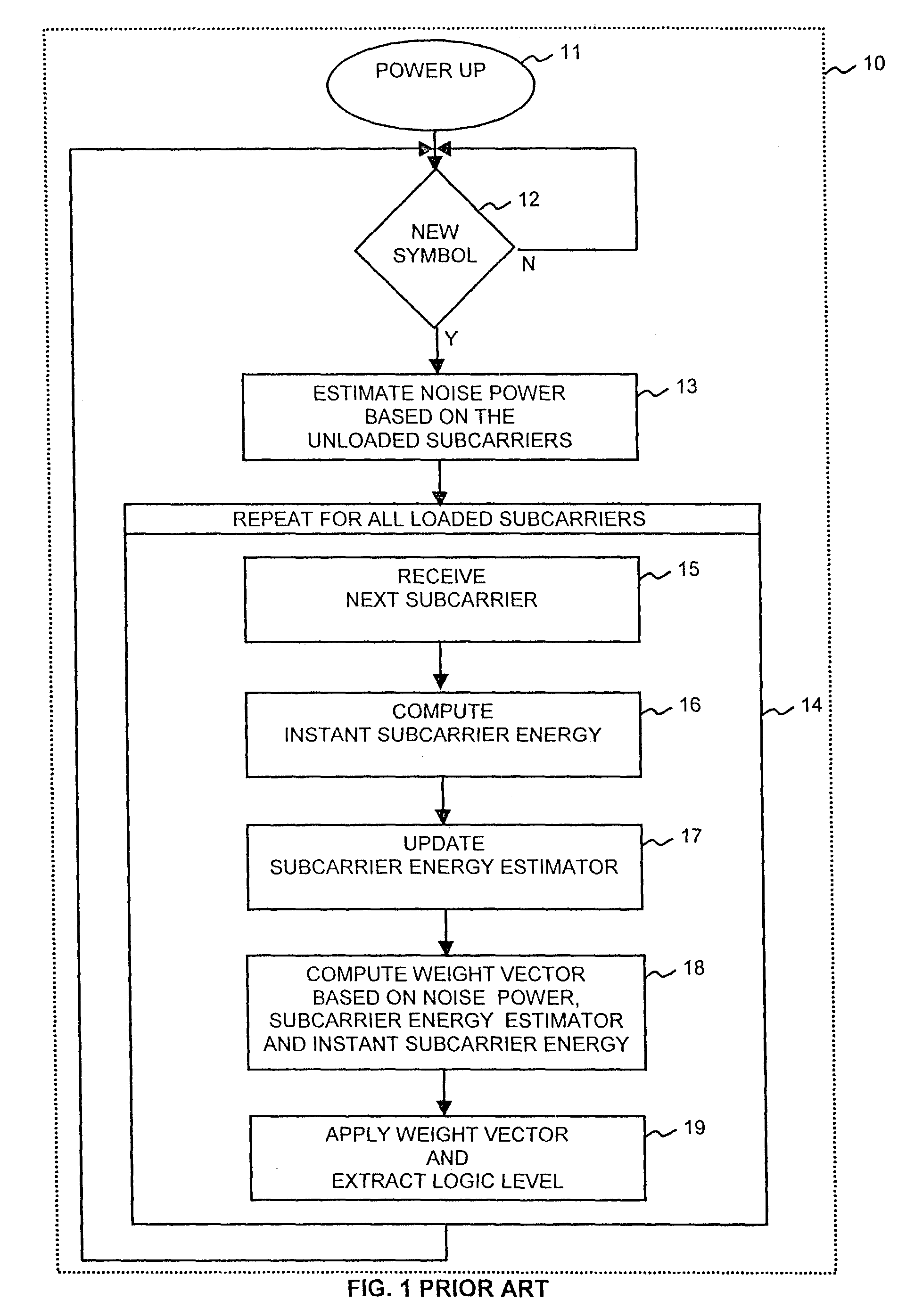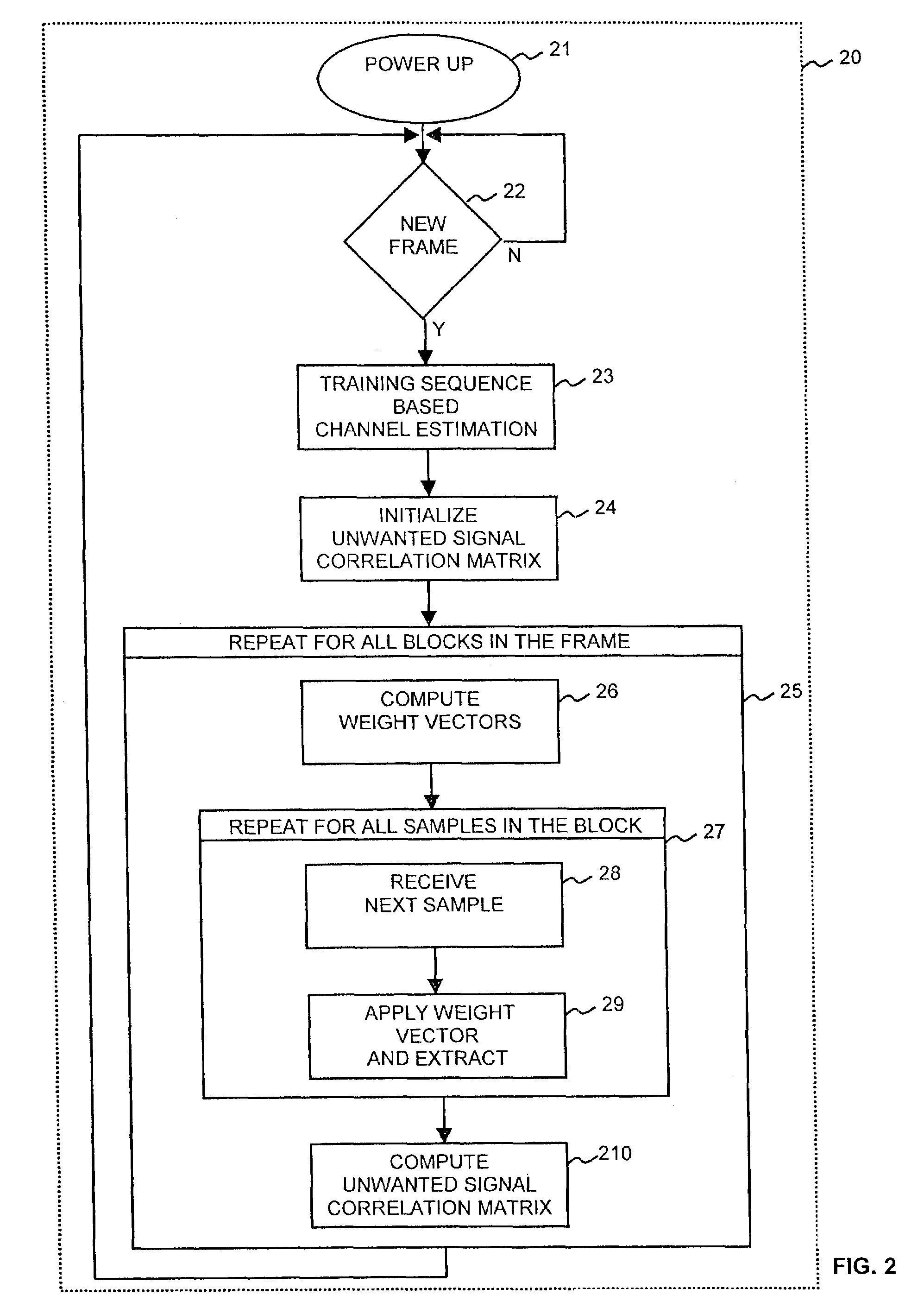Method and apparatus for diversity combining and co-channel interference suppression
a technology of diversity combining and cochannel interference, applied in the field of wireless communication, can solve the problems of unrealistic modeling assumptions, high computational complexity, and high difficulty in incorporating high-performance adaptation techniques in practical applications
- Summary
- Abstract
- Description
- Claims
- Application Information
AI Technical Summary
Benefits of technology
Problems solved by technology
Method used
Image
Examples
Embodiment Construction
[0022]With reference to FIG. 2, a flowchart of operation of a diversity combiner 20 in accordance with a preferred embodiment of the present invention is used by a receiver coupled to receive a plurality of K input signals using an antenna array. Each signal consists of a useful information signal and an additive unwanted signal. The unwanted signal contains additive noise, usually referred to as Additive White Gaussian Noise (AWGN) in wireless communications, and may additionally contain one or more interferer signals possibly of the same structure as the useful information signal. Each input signal is characterized by a frame including a sequence of data blocks, said frame comprising a known training data block sequence and an information data block sequence, each of said training and information sequences including at least one data block, each data block including N samples. The flowchart begins with power up in block 21. When a new frame is received in block 22, the channel vec...
PUM
 Login to View More
Login to View More Abstract
Description
Claims
Application Information
 Login to View More
Login to View More - R&D
- Intellectual Property
- Life Sciences
- Materials
- Tech Scout
- Unparalleled Data Quality
- Higher Quality Content
- 60% Fewer Hallucinations
Browse by: Latest US Patents, China's latest patents, Technical Efficacy Thesaurus, Application Domain, Technology Topic, Popular Technical Reports.
© 2025 PatSnap. All rights reserved.Legal|Privacy policy|Modern Slavery Act Transparency Statement|Sitemap|About US| Contact US: help@patsnap.com



